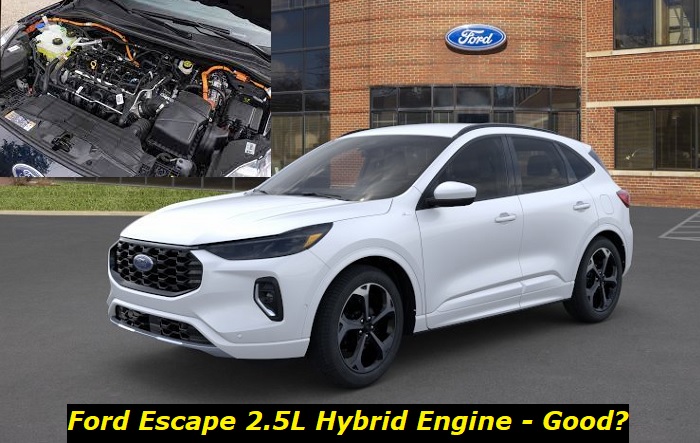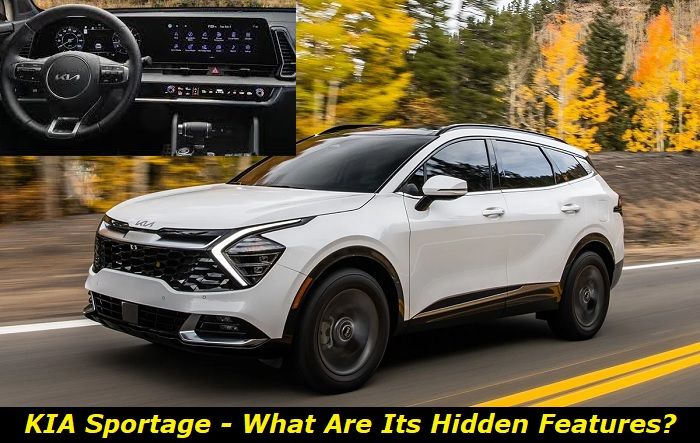The new Ford Escape in its 4th generation finally offers two versions of hybrid powertrains. They both rely on the same 2.5L Duratec engine and I just can't think of a better heart for a modern hybrid powerplant. The model offers the standard parallel hybrid and also plug-in hybrid versions that differ according to the battery pack size and the use of electrical charge.
Today, I will tell you more about the 2.5L Hybrid Duratec iVCT engine in the new Ford Escape and will cover all of its important advantages and downsides. I will look into longevity and into some technologies that can potentially grow into problems and reduce the lifespan of the vehicle.

Key features and my opinion about the engine
- Production years:2008-now
- Average lifespan of 2.5L Hybrid:220,000-250,000 miles
- Fuel supply type:port injection
- Power range:168-175 hp
- Fuel efficiency:excellent
- Engine block material:aluminum
- Engine reliability score:high
- The most common problems:various oil leaks, noisy work, timing chain problems, phaser problems.
What should you know about the Escape hybrid engine?
Well, this is one of the coolest hybrid powertrains on the market, in my opinion. It's based on the 2.5L Duratec engine which is one of the most reliable choices for a hybrid solution today. The engine is not new but it was updated and upgraded to fit the new role. Though, it's still the good old Duratec that is not going to break often.
Also, you may choose between two types of hybrid vehicles. If you just want better gas mileage, choose the parallel hybrid with a small and affordable battery and fewer potential problems. If you wish for something like an EV but with a gas engine backing it, just go for the Escape PHEV and get what you need.
Here are some key takeaways:
- the 2.5L Duratec is just the same good old unit engineered in 2012 in cooperation with Mazda but with slight changes like the Atkinson cycle;
- both types of the hybrid have two electric motors and the planetary gearset that serves to smartly combine gas power and electric power;
- the overall power of the hybrid powertrain is rated at 192 hp and the PHEV offers 210 hp - not perfect but still not bad;
- both hybrids work with a CVT - a little disappointing news, I would expect to see here a traditional bulletproof transmission;
- these hybrid models don't offer an AWD option which is also weird and really bad for marketing;
- the PHEV has a 14.4 kWh battery pack while the parallel hybrid has only 1.1 kWh capacity in its battery;
- the PHEV Escape can go about 37 miles in the all-electric mode which turns it into an EV for city driving;
- you can charge the battery in the plug-in hybrid version but not in the parallel hybrid;
- the EPA estimated gas mileage is 42 MPG in the city and 36 MPG on highways for the parallel hybrid and the PHEV stats are misleading.
For the PHEV Escape, they say it can go 40 MPG in any condition once the battery is low. But before that, the gas mileage will be about 100 MPG since the Escape will mostly use the battery. I fairly don't understand this estimated gas mileage and wish they would tell us something more specific. But anyway, the vehicle seems to be really economical for an SUV.
The fact that both hybrid types use a CVT transmission is also disappointing. This is a PowerSplit CVT transmission that is pretty good for gas mileage but unknown in terms of durability. If you want my guess, this will be one of the most short-lasting components of the entire powertrain. CVT units often last about 100,000 miles and I don't see any reason why this one should last longer.
What about the longevity of the hybrid powertrain in the Escape?
Starting with the gas engine, I can clearly say that this Duratec powerplant is going to live for ages. It's a durable and high-quality engine that has optimal displacement, good history, and wonderful technology behind it. Yes, it still has some common problems that we'll discuss later. But anyway, this is one of the greatest gas engines in hybrid powertrains all over the world now.
When it comes to battery packs, the parallel hybrid battery is not going to live really long. I believe in 80-100 thousand miles you will need to replace it. But the good thing is that this 1.1 kWh battery pack is not going to cost you a fortune.
The PHEV battery pack is a different thing. It's quite big and it's going to cost you a lot if you want to replace it. So, most likely, you will need to replace it by cells once you notice that the gas mileage is deteriorating. Otherwise, at about 120,000 miles, the battery will completely die.
The transmission is most likely not very durable and will require expensive repair or even replacement at 100,000 miles or so. I really hope you will be able to drive it longer but the stats may show you that CVTs just don't live more than that. Replacement of the transmission is not something your wallet will be glad about.
So, the potential durability of the powerplant is about 100,000 miles till you get first great problems and then, after you invest in it, the entire powertrain may go up to 200,000 miles till it becomes financially insane to own.
What are the common problems with the new Escape Hybrid?
I've outlined some issues with the battery packs and the CVT, so in this section, I want to pay attention to engine issues that can happen with the 2.5L Duratec unit. Yes, it's a really well-studied engine and Ford should have addressed all its common problems. But I still notice some issues, so it's time to talk about them.
1. Oil leaks
One of the major causes of oil leaks is the oil heat exchanger. But some leaks may come from different spots like valve cover or some seals. Usually, you will see the first leaks after about 50,000 miles and then they will become your routine. Although the leaks are almost never fatally intensive, you should address them on time before they create new problems for the engine.
2. Intake system issues
I've never seen such a complicated intake with so many parts and flaps that can get stuck and eventually make this system malfunction. Mechanics in Ford repair shops agree that repairing and setting up the intake is not something they would want to do every day of their lives. Also, they acknowledge that this system often malfunctions in high-mileage Duratec engines.
3. Cooling system issues
This is quite a weird problem but you will likely see it in every other 100,000-mile-plus 2.5L Duratec engine. Its cooling system is easily corroded if the antifreeze is not 100% efficient. If you don't change the antifreeze every 4-5 years or 50,000 miles, you will eventually get this problem. Bad corrosion of coolant pipes will eventually lead to leaks and other issues.
4. Phaser problems
Phasers in these engines are not durable at all. They may start knocking at about 60,000 miles. The only way to get rid of this sound is to replace the phasers which are not cheap at all. Also, if phasers fail, the engine will start burning much more gas and will also burn oil. Driving with a failed phaser is not recommended - only if you drive directly to the dealership or repair shop.
5. Timing chain premature death
The timing chain is not that bad but at 170,000 miles it will most likely fail. If you have just invested in the new battery pack, replaced your CVT, and now think you may drive at least 200,000 miles, this is a shocking experience. The failed timing chain will almost always kill the valve system of the engine and affect the entire head. Repairs are so expensive that it's cheaper to replace the engine.
How can you prolong the life of the Escape Hybrid Duratec iVCT engine?
Well, you can prolong its life just by understanding what common problems may appear in this engine and how to deal with them.
Here are my recommendations on how you can drive your Escape Hybrid longer:
- avoid aggressive driving - this will help you prevent killing your CVT;
- watch the battery health and replace cells when needed, especially in the PHEV version;
- warm up your engine and the CVT - start the engine, put it in D or R, and wait for 30-60 seconds before you drive;
- never drive for a long time with the same speed - this is what kills the CVT;
- use all-electric mode as much as possible to save your engine;
- remember that regular maintenance is vitally important;
- use dealerships or really trusted shops to repair and maintain your Escape.
The basic warranty for the Escape Hybrid is just 3 years or 36,000 miles. I am pretty sure you will not see any issues within this period. But high-mileage Escape hybrid SUVs are not going to be so reliable.
Still, I can recommend the Escape hybrid, especially the PHEV because it has a great engine, good gas mileage, it feels cool on the road, and it's not as expensive as some of its competitors.
About the authors
The CarAraC research team is composed of seasoned auto mechanics and automotive industry professionals, including individuals with advanced degrees and certifications in their field. Our team members boast prestigious credentials, reflecting their extensive knowledge and skills. These qualifications include: IMI: Institute of the Motor Industry, ASE-Certified Master Automobile Technicians; Coventry University, Graduate of MA in Automotive Journalism; Politecnico di Torino, Italy, MS Automotive Engineering; Ss. Cyril and Methodius University in Skopje, Mechanical University in Skopje; TOC Automotive College; DHA Suffa University, Department of Mechanical Engineering






Add comment